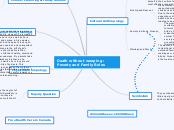por Anika Kisana - Cawthra Park SS (2202) 7 anos atrás
333
Anika's Case Study - Anthropology
In Alto do Cruzeiro, Brazil, the societal norms and economic conditions profoundly impact maternal and child health. Unlike countries with accessible healthcare systems, such as Canada, where health services are free and readily available, the families in Alto do Cruzeiro struggle with a lack of medical facilities and financial resources.









